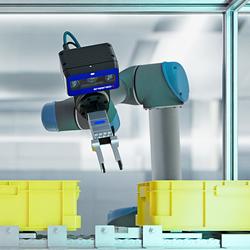DARPAs FLA program aims to create unmanned nano robot like insects & birds that can go into buildings & perform key activities that will not be possible by Humans.
3 Micro Drones & Robot Swarms Initiatives Backed by the US Military
Contributed by | Zimlon
DARPA’s Fast Lightweight Autonomy Program
DARPA’s FLA program aims to create unmanned nano robot like insects & birds that can go into buildings & perform key activities that will not be possible by Humans. CNN has some more details on the program.
The Defense Advanced Research Projects Agency (DARPA) -- already famous as the maker of some of the U.S. military's more far-fetched war robots -- aims to develop autonomous drones small enough to fit through an open window. Speeding through unstable buildings or threatening indoor spaces at 20 meters per second, the unmanned aerial vehicle would obviate the need for physical entry that puts troops or civilian response teams at risk. Part of a military brief called the Fast Lightweight Autonomy program, the study is looking at developing new algorithms to allow a small UAV operating without a remote pilot and without use of GPS waypoints to navigate stairways, corridors and other obstacles.
"Birds of prey and flying insects exhibit the kinds of capabilities we want for small UAVs," said Mark Micire, DARPA's Program Manager. "Goshawks, for example, can fly very fast through a dense forest without smacking into a tree.
"Many insects, too, can dart and hover with incredible speed and precision.
Low-Cost UAV Swarming Technology (LOCUST) by Office of Naval Research (ONR)
The ONR’s LOCUST program demonstrated 30 rapidly launched autonomous swarming UAVs in early 2015. The release from the ONR has more details:
The LOCUST program includes a tube-based launcher that can send UAVs into the air in rapid succession. The breakthrough technology then utilizes information-sharing between the UAVs, enabling autonomous collaborative behavior in either defensive or offensive missions.
Since the launcher and the UAVs themselves have a small footprint, the technology enables swarms of compact UAVs to take off from ships, tactical vehicles, aircraft or other unmanned platforms.
The ONR demonstrations, which took place over the last month in multiple locations, included the launch of Coyote UAVs capable of carrying varying payloads for different missions. Another technology demonstration of nine UAVs accomplished completely autonomous UAV synchronization and formation flight.
General Robotics, Automation, Sensing and Perception (GRASP) Laboratory at the University of Pennsylvania
The GRASP laboratory is backed by a $5M grant from the department of defense to study warming groups of networked autonomous robots. The Army Research lab also funded Prof. Vijay Kumar for another $22M to study micro drone projects. The LAB also produced a nanoquadrotor called the “Hummingbird” which is controlled by software algorithms and not by humans.
About Zimlon:
Zimlon integrates crowd sourced research to provide unique insights.
The content & opinions in this article are the author’s and do not necessarily represent the views of RoboticsTomorrow
Featured Product

